|
TennisOne Lessons Situation Training Baseline Tactics Package Wayne Elderton Situation Training is a practical application of the international coaching trend called the Game-based approach. It allows players to learn the tactics and techniques required for successful play in real-life situations. This article is a summary of the previous articles in the series. The goal is to clarify the basic ‘tactical package' players can utilize to learn dominating baseline play. Typically, players are first taught strokes. Sometime later, if at all, they are introduced to tactics. The glitch in this process is that technique is only a means to execute a tactic. Understanding tactics (what you are supposed to do) must always come before technique (how you are supposed to do it). Too many players complain about losing to technically inferior opponents. The reason, few are taught to play the game. That is why so many players like doubles lessons. Coaches seem to ‘get it' when teaching doubles. They prioritize strategy and positioning, decision-making and movement. If they would do the same for singles lessons, they would have even more success. Doing this for singles requires a ‘tactical framework'. A system to follow that puts the components together in a logical way. Receiving as well as Sending I prefer that players learn ‘shot situations' rather than strokes. Shot Situations include the tactics and the technique required to successfully play. Strokes typically emphasize projecting the ball. They are typically taught by conforming players to outdated stroke models that don't easily adapt to what is really needed on the court. In contrast, a ‘shot' goes through a cycle of all the elements required to receive the ball in a specific situation (split-step, reading the opponents stroke, movement to the ball, setting-up and timing). And then (and only then), sending the appropriate stroke. Because of the nature of tennis (the majority of points won through errors), attempting to hit winners from the baseline will always lose you more points than you get. In a baseline exchange, 60-80% of all the points you lose will be from reception errors (which result in errors in sending the ball). When training these situations, learning to receive the ball well is critical. Here is the package we have covered in the articles so far. Each of the four basic baseline rally tactical situations includes receiving as well as sending. They are placed in the preferred order of development (but not the only possible order). They are based on the intentions and decisions required when located in specific areas of the court. To reference the location where the action is, we will split the court into three lateral “Lanes” (Forehand Lane, Center Lane, Backhand Lane): Dominating the Center Lane Most players between 3.0-5.0 levels tend to have baseline exchanges that gravitate to the center (Figure 1). If they can learn to gain advantage, it can open the door to effective play using all the court. Players can move the ball into the side lanes from the center to get opponents on the move or pick on a weak side.
In video Clip #1, Roddick (close side) uses his backhand to pin Coria into the center of the court to set-up his inside-out forehand. This in turn sets-up his inside-in forehand. Dominating the Forehand Diagonal This is one of the most common exchanges in tennis (Figure 2). Gaining advantage in a crosscourt rally will set-up many opportunities to dominate.
Video Clip #2 shows Federer (far side) receiving a forehand crosscourt from Safin. He responds with a high quality crosscourt shot pinning Safin into the corner and forcing an error. Dominating the Backhand Diagonal Going after an opponent's backhand is one of the most common (and effective) tactics in tennis (Figure 3). Players must learn to receive the ball when opponents send it to their backhand, turn the tables around, and gain advantage by provoking the opponent's backhand.
Video Clip #3 has Safin (far side) sending a crosscourt to Federer's backhand. Federer then hits a high quality backhand that pins Safin into the corner and forces an error. Re-directing/Receiving a Re-direct Changing an opponent's crosscourt into a solid down-the-line is also a common play seen in every professional match. To do it well requires good decision-making to maintain consistency but capture the advantage. On the receiving side, a player must be able to take an opponent's down-the-line and stay in the point.
Video Clip #4 shows Roddick (close side) in a groundstroke exchange with Federer. In the first shot, Roddick moves Federer by re-directing Federer's crosscourt. After a Federer crosscourt, Roddick then hits a crosscourt that pins Federer into the backhand corner. Roddick then chooses the appropriate time to re-direct a backhand down-the-line for a winner. Keep in mind that when going for down-the-lines, you are not looking to end the point so much as move your opponent to force a weak response. Tactics and ‘Actions' Earlier I mentioned that technique is second to tactics. But it is not secondary! Both are required. Knowing exactly what tactic to use but not having the technical ability to perform it wins no points either. Once the shot situation is identified, the next step is to learn the actions required to execute it effectively. Every situation requires biomechanically efficient movements (actions) fit to the situation. There are rallying actions and attacking actions, defending actions and countering actions. Players at every level encounter these ‘phases of play' (even beginners) so they need to learn the ins and outs of all of them. The name of the Canadian coaching methodology is actually called “Actions” for this reason. Are you losing because you were taught a ‘one size fits all' backhand stroke that doesn't work in all the situations you are coming across in your matches? This is why I have used professional examples in the video clips. Even though the articles in the series emphasized the tactical priorities of the situations, the video clips provide technical revelations as well. By looking at different top players, you can figure out the difference between ‘style' variations in good technique and ‘principles' that all top players use. See Heath Waters “Cutting Edge” series as a good example of a ‘principles' approach to successful technique. Go back and look at the players in the clips with your ‘technical' eyes on. What actions do they use in the situations?
How do they modify their actions to fit the situation? For example, you may notice that when they perform a forehand attacking with power action on a higher ball, they prepare the racquet higher and level out the swing path. This is a modification from when they rally (using a more low to high swing to arc the ball). By learning with Situation Training, you can be fully equipped to play the game. You can practice all the components required for successful play:
Practicing
For some, this will all seem very advanced. Remember, your tactics and techniques are relative to your level. For example, to pressure an opponent at the 3.0 level with depth may mean just keeping the ball past the serviceline (maybe with mild topspin). For a pro, the depth, pace, and spin, would need to be greater. As long as you are trying to do the tactics with clear intention, you will be on the right track. If you can't do them, it reveals a great opportunity to improve your game far more specifically than just repeating the standard forehands and backhands. The easiest way to practice is with a partner. Start the ball with a shot that re-creates the situation you want to improve. Make the appropriate decision to respond the shot, and play out the point from there. If you can't perform the shot at all, consider engaging a coach or even a ball machine to get in some ‘quality reps' of the specific skill you need (e.g. receiving a weaker ball in the center and running around your backhand to hit a forehand inside-out). Then, put it back into practice with a partner. Training the tactics and technical actions of these four basic baseline situations will yield very noticeably results. You will get better at what actually happens during a tennis match. Situation Training will equip you for the realities of tennis far more than any isolated stroke training could ever do. Your comments are welcome. Let us know what you think about Wayne Elderton's article by emailing us here at TennisOne.
|

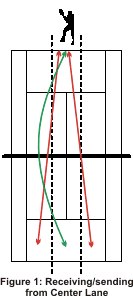
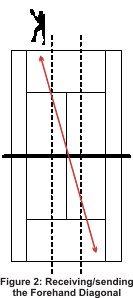
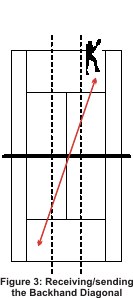
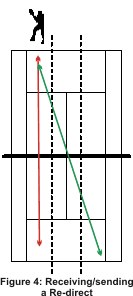
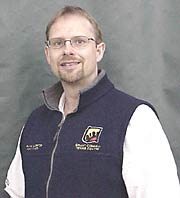 Wayne Elderton
Wayne Elderton